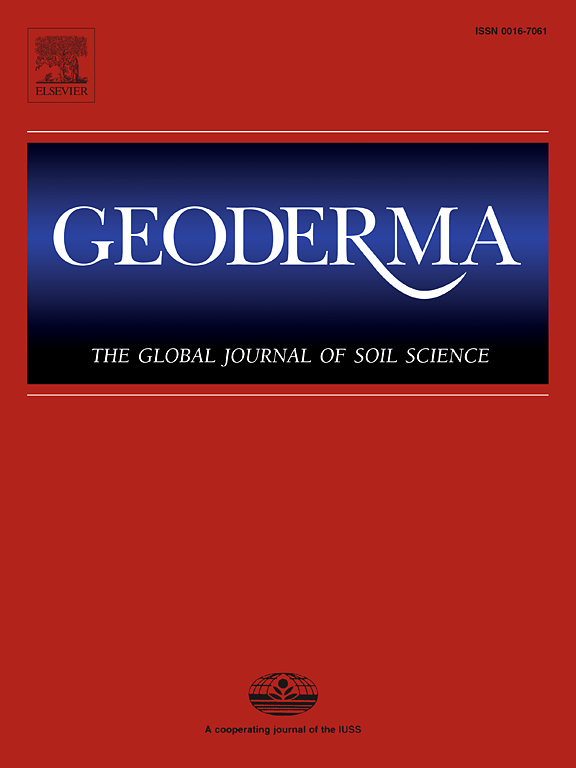Can inert pool models improve predictions of biochar long-term persistence in soils?
IF 5.6
1区 农林科学
Q1 SOIL SCIENCE
引用次数: 0
Abstract
The long-term persistence of biochar in soil is often predicted by extrapolating mineralization data from short-term laboratory incubations. Single first-order, double first-order, triple first-order and power models have been employed for this purpose, all of which have an inherent assumption that biochar is biodegradable. However, recent insights challenge this assumption by suggesting that a large fraction of biochar is inert. If so, it would make sense to reflect this in the models used, by incorporating an inert carbon (C) pool. We hypothesized that such inert pool models would fit better to incubation data than existing models and give more reliable long-term predictions. We evaluated this by fitting the models to data from a recently compiled extensive dataset of biochar incubations. The inclusion of an inert pool enhanced the model fits over first-order models in most cases. However, inert pool models overestimated biochar persistence compared to the measured outcomes. By contrast, the double first-order model, which has been the most widely used to date, underestimated biochar persistence even in the short term. The power model in general outperformed all other models and gave the most reliable predictions, although it was sensitive to increasing or fluctuating mineralization rates in the datasets.
惰性池模型能否改善生物炭在土壤中长期持久性的预测?
生物炭在土壤中的长期持久性通常是通过推断短期实验室培养的矿化数据来预测的。为此采用了单一阶、双一阶、三一阶和幂模型,所有这些模型都有一个固有的假设,即生物炭是可生物降解的。然而,最近的研究表明,生物炭中有很大一部分是惰性的,从而对这一假设提出了挑战。如果是这样的话,那么在所使用的模型中通过纳入惰性碳 (C) 池来反映这一点是有意义的。我们假设,这种惰性碳库模型将比现有模型更适合孵化数据,并能提供更可靠的长期预测。我们通过将模型与最近编制的大量生物炭培养数据集进行拟合来评估这一点。在大多数情况下,与一阶模型相比,惰性池的加入增强了模型的拟合效果。然而,与测量结果相比,惰性池模型高估了生物炭的持久性。相比之下,迄今为止使用最广泛的双一阶模型即使在短期内也低估了生物炭的持久性。尽管幂模型对数据集中矿化率的增加或波动比较敏感,但它的表现总体上优于所有其他模型,并给出了最可靠的预测。
本文章由计算机程序翻译,如有差异,请以英文原文为准。
求助全文
约1分钟内获得全文
求助全文
来源期刊

Geoderma
农林科学-土壤科学
CiteScore
11.80
自引率
6.60%
发文量
597
审稿时长
58 days
期刊介绍:
Geoderma - the global journal of soil science - welcomes authors, readers and soil research from all parts of the world, encourages worldwide soil studies, and embraces all aspects of soil science and its associated pedagogy. The journal particularly welcomes interdisciplinary work focusing on dynamic soil processes and functions across space and time.
 求助内容:
求助内容: 应助结果提醒方式:
应助结果提醒方式:


